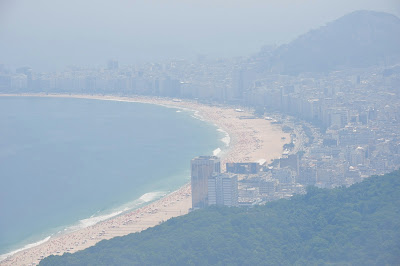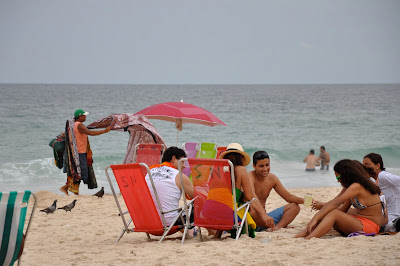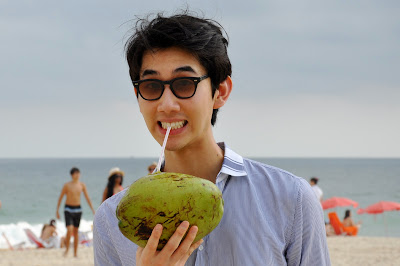Walking around Rio de Janeiro, I am struck by the lack of what Herr Niesz often referred to last semester as
amerikanischer Kulturimperialismus; even in the most international or touristy areas of the city, there are very few Starbucks, McDonald's or other icons of American culture-imperialism.
I'm cognizant of the irony of the fact that I've come to expect (though not to frequent) such franchises when traveling abroad, especially in the downtown areas of major cities like Rio. I used to balk at the offensive incongruity of Starbucks franchises in locations such as the Forbidden City or Insadong, but, sadly, I've gradually become desensitized to such scenes and, in fact, in many metropolises, such franchises seem to blend into the urban landscape.
Which factors, do you think, explain the dearth of foreign brands in Rio? How has the city managed to resist the seemingly unstoppable globalization of fast food and fast fashion? After all, Brazil—the "B" in BRIC—has long been an international country influenced by numerous foreign cultures.
I imagine that one contributing reason could be the relative economic isolation of the military dictatorship in the not too distant past. Another explanation could be the foreign corporation-unfriendly import substitution model followed by Brazil (and many other Latin American economies) for several decades during the last century. I've also noticed that there seems to be very little need for foreign franchises, particularly in the fast food industry. Juice stands and
lanchonetes, which can be found on every block, provide an abundance of cheap and delicious offerings; even in upscale Leblon,
pão de queijo and a glass of freshly squeezed papaya juice will only set you back about eight reais.
Below are the only two signs trumpeting American fast food brands that I've seen all week:
Dear Rio, for the sake of Cariocas and visitors alike, please don't give in to
Americanização. I'll take açaí and coconut water over syrupy lattes any day.



















































